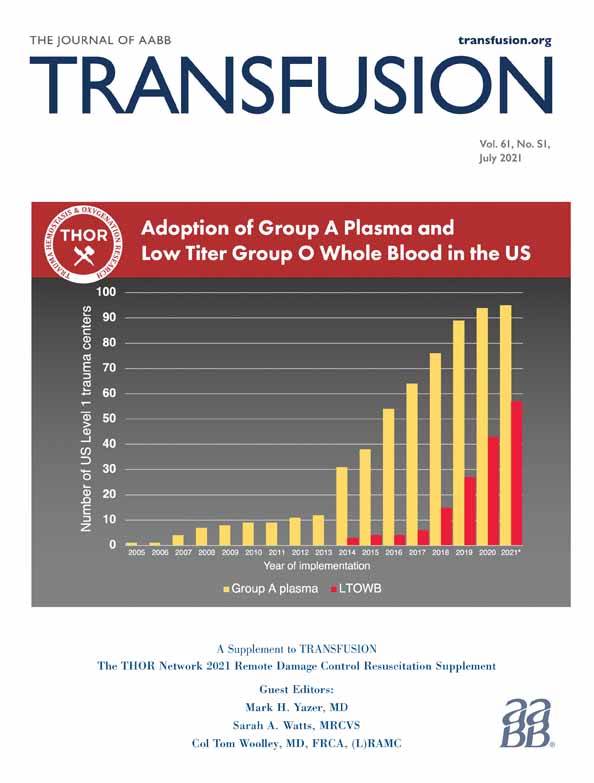Compensatory reserve detects subclinical shock with more expeditious prediction for need of life-saving interventions compared to systolic blood pressure and blood lactate
Abbreviations: ab, abnormal; CRM, compensatory reserve measurement; LAC, blood lactate; LSI, life-saving intervention; n, normal; SBP, systolic blood pressure.
Funding information: US Army Combat Casualty Care Research Program under the Medical Research and Development Command, Grant/Award Number: W81XWH-14-2-0149; Research and Development; Combat Casualty Care Research Program
Abstract
Introduction
We conducted a prospective observational study on 205 trauma patients at a level I trauma facility to test the hypothesis that a compensatory reserve measurement (CRM) would identify higher risk for progression to shock and/or need a life-saving interventions (LSIs) earlier than systolic blood pressure (SBP) and blood lactate (LAC).
Methods
A composite outcome metric included blood transfusion, procedural LSI, and mortality. Discrete measures assessed as abnormal (ab) were SBP <90 mmHg, CRM <60%, and LAC >2.0. A graded categorization of shock was defined as: no shock (normal [n] SBP [n-SBP], n-CRM, n-LAC); sub-clinical shock (ab-CRM, n-SBP, n-LAC); occult shock (n-SBP, ab-CRM, ab-LAC); or overt shock (ab-SBP, ab-CRM, ab-LAC).
Results
Three patients displayed overt shock, 53 displayed sub-clinical shock, and 149 displayed no shock. After incorporating lactate into the analysis, 86 patients demonstrated no shock, 25 were classified as sub-clinical shock, 91 were classified as occult shock, and 3 were characterized as overt shock. Each shock subcategory revealed a graded increase requiring LSI and transfusion. Initial CRM was associated with progression to shock (odds ratio = 0.97; p < .001) at an earlier time than SBP or LAC.
Conclusions
Initial CRM uncovers a clinically relevant subset of patients who are not detected by SBP and LAC. Our results suggest CRM could be used to more expeditiously identify injured patients likely to deteriorate to shock, with requirements for blood transfusion or procedural LSI.
CONFLICT OF INTEREST
The authors have disclosed no conflicts of interest.




